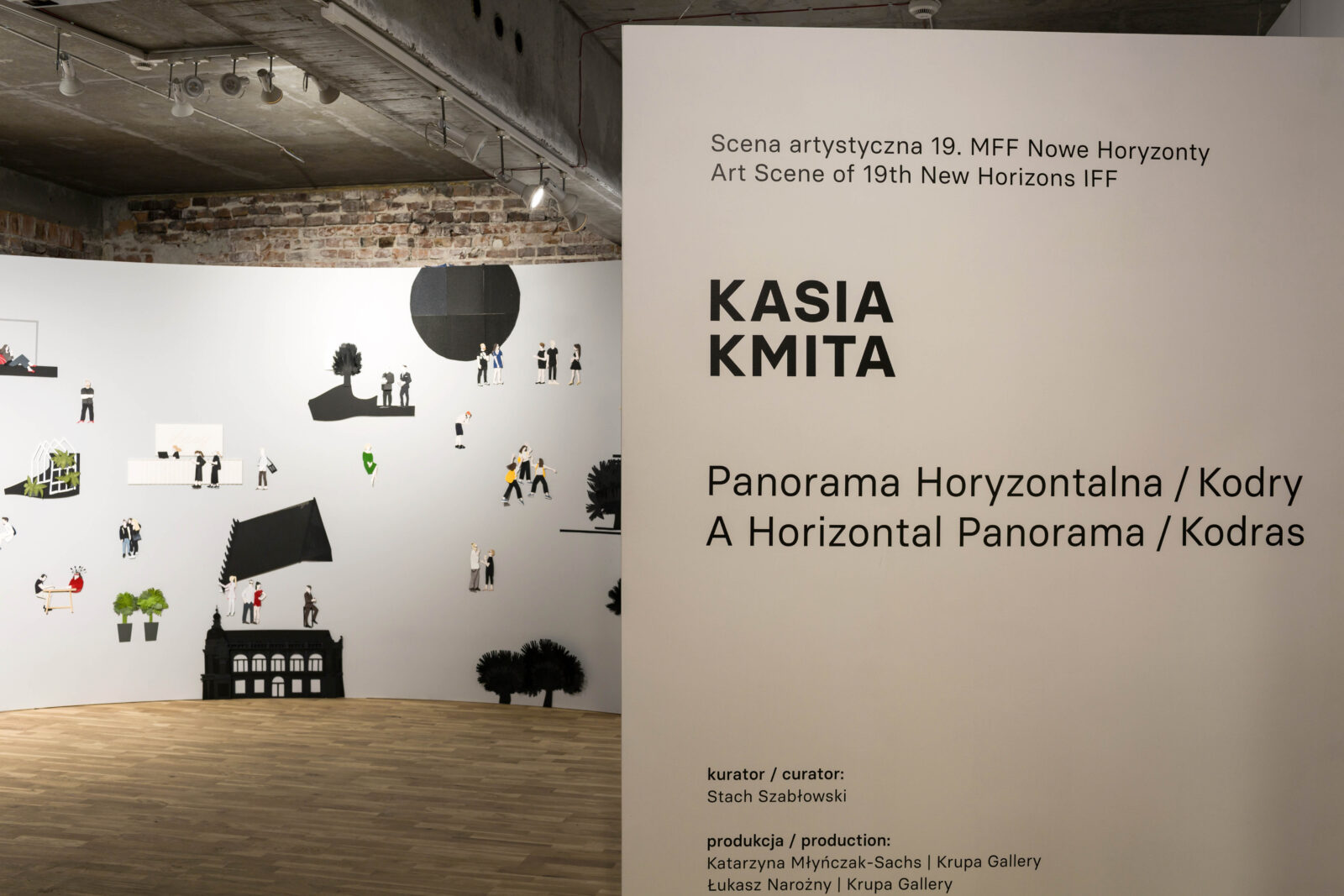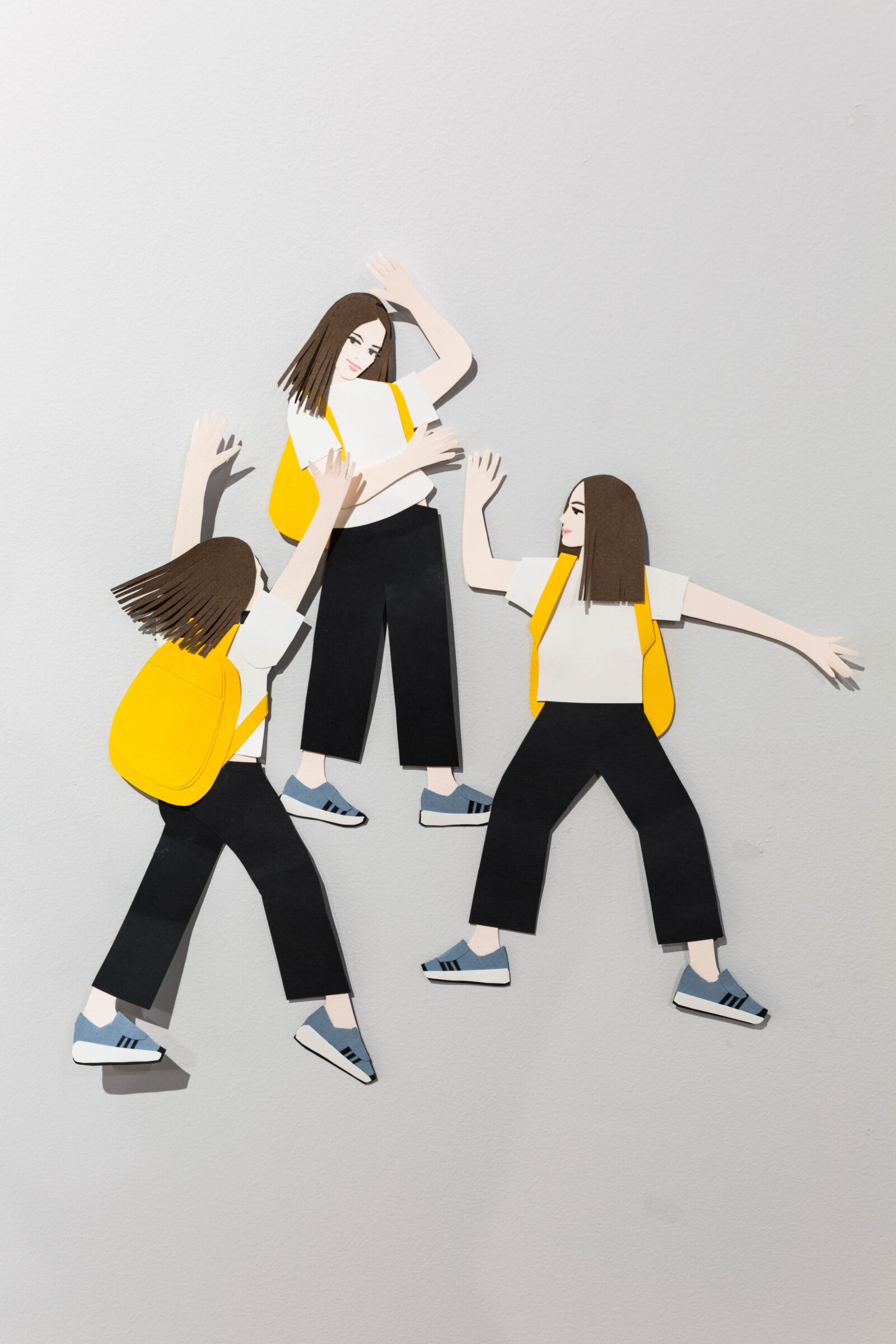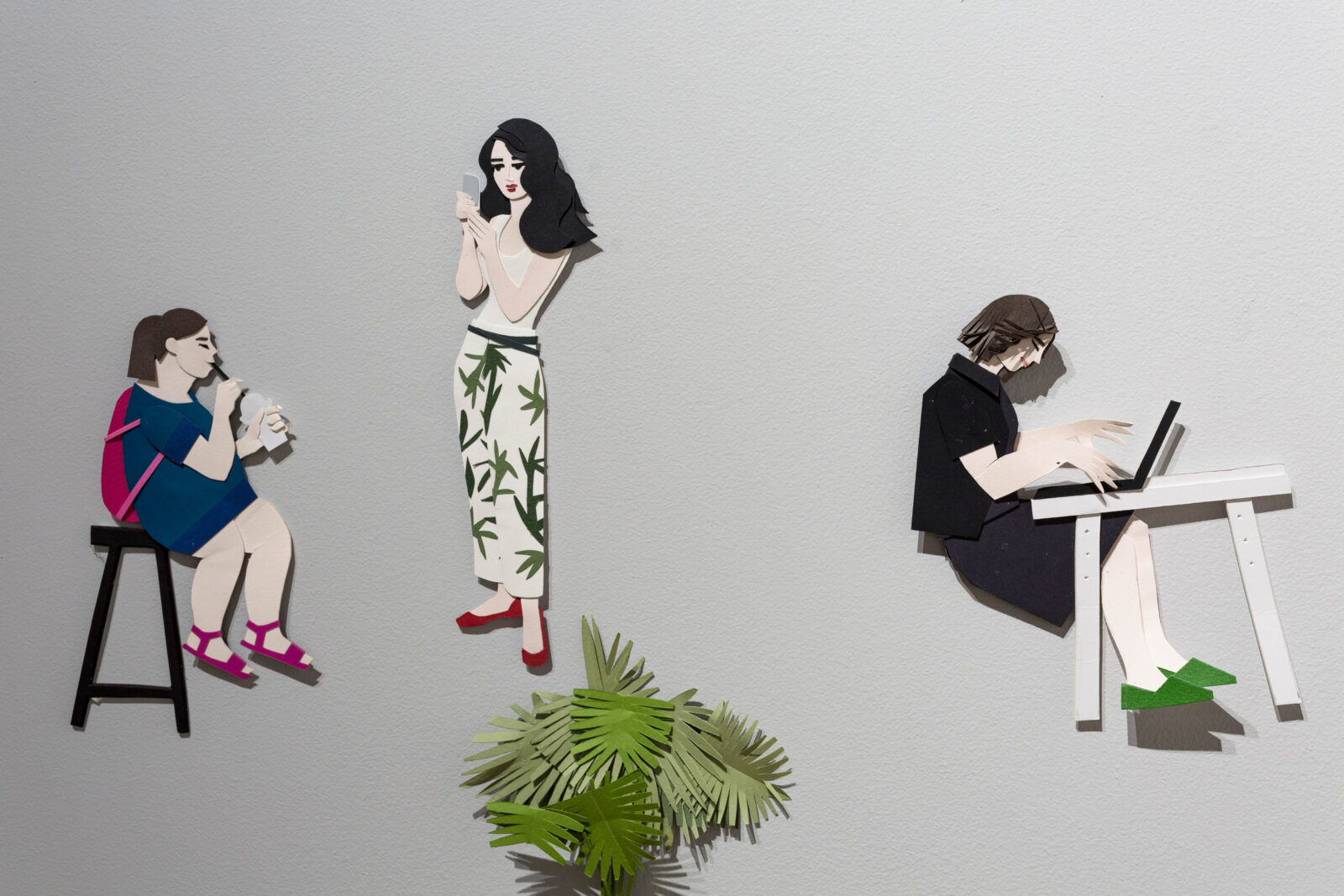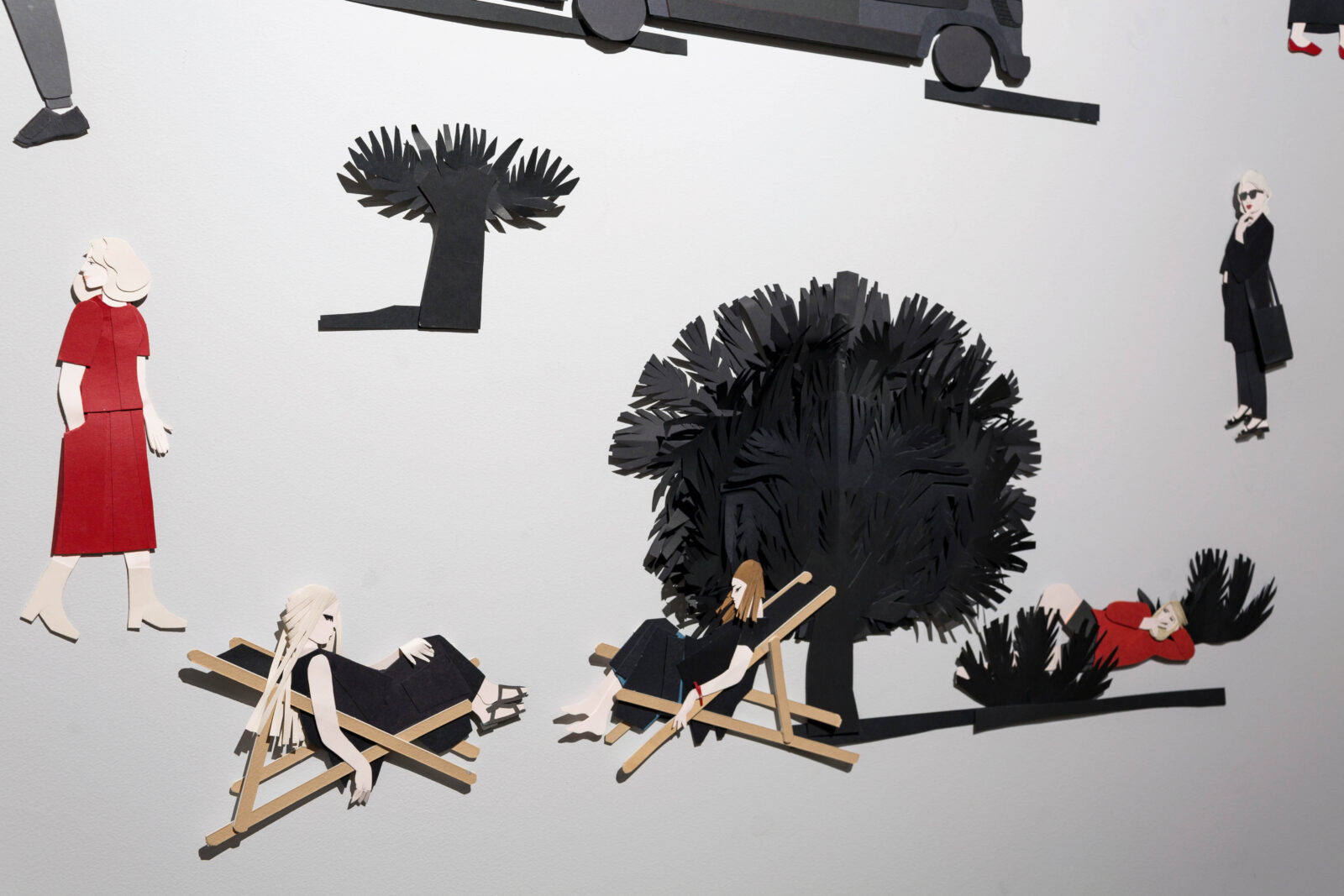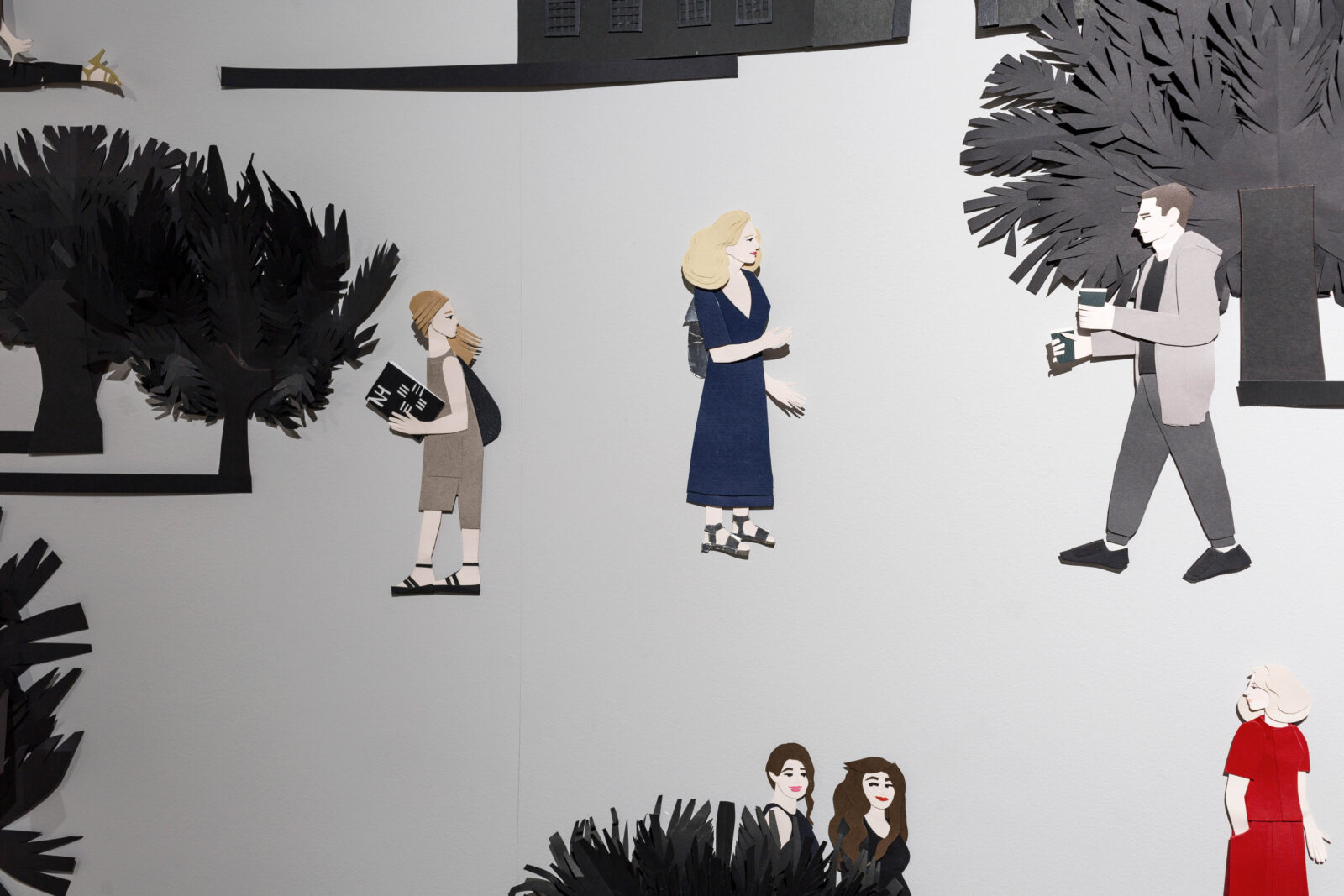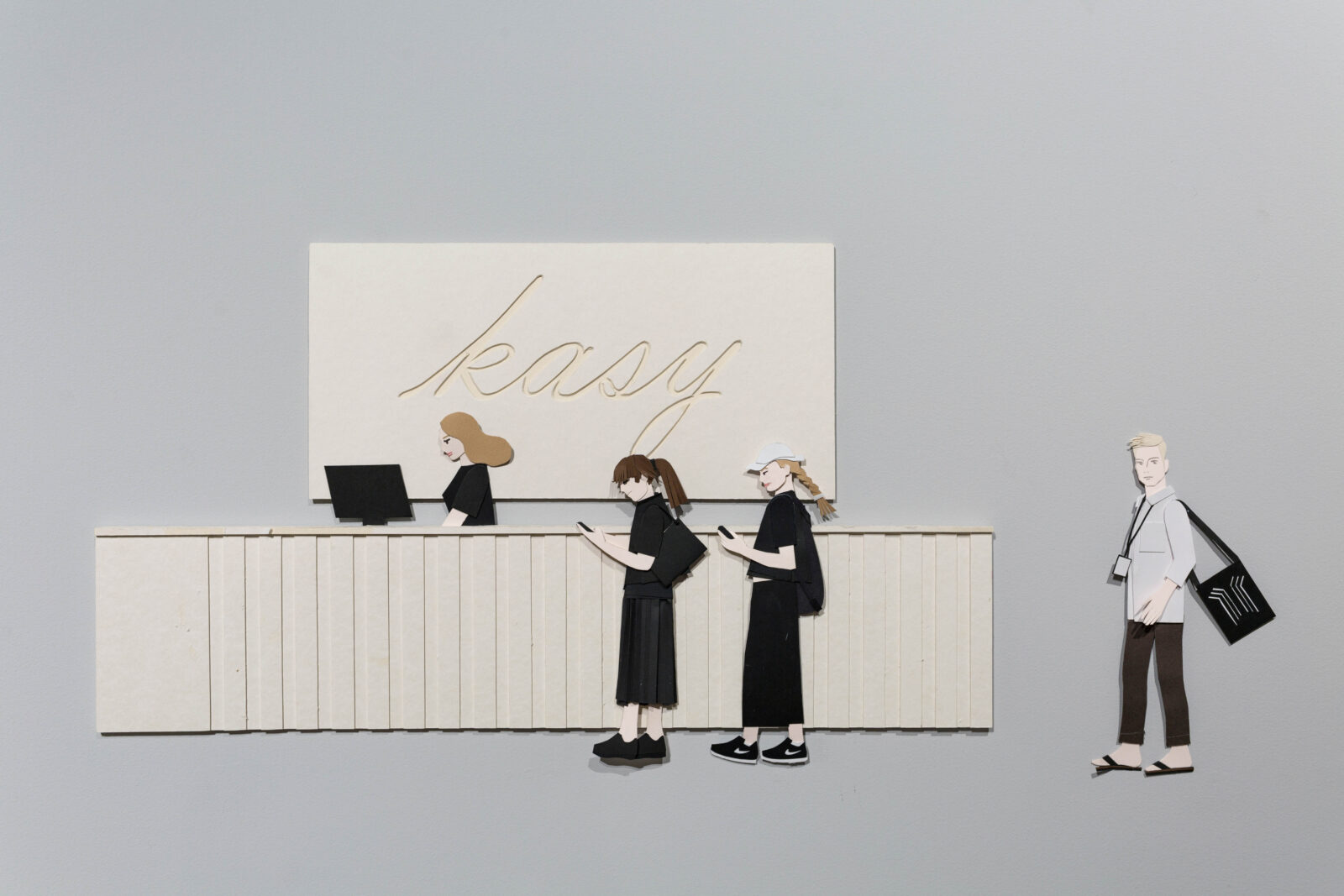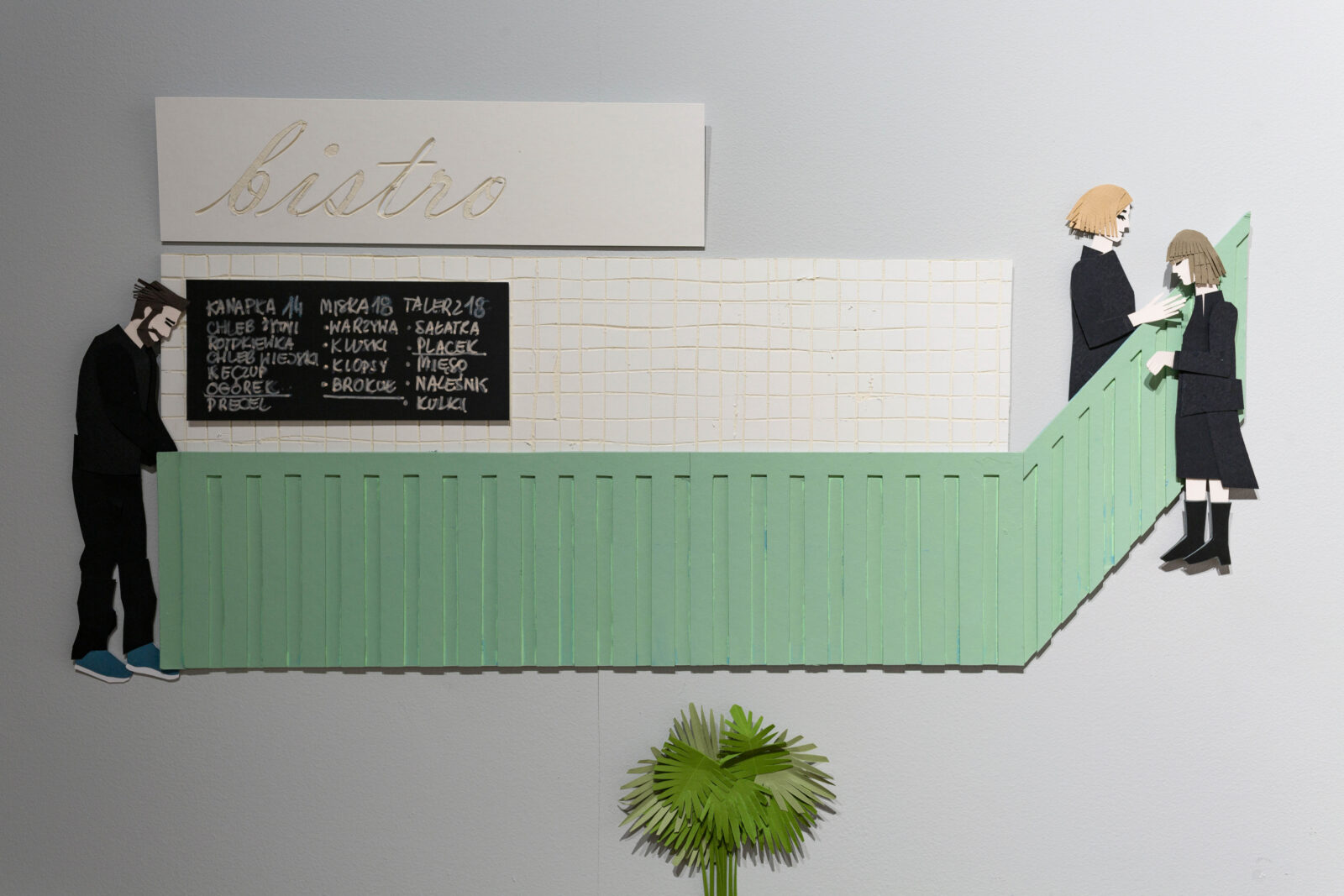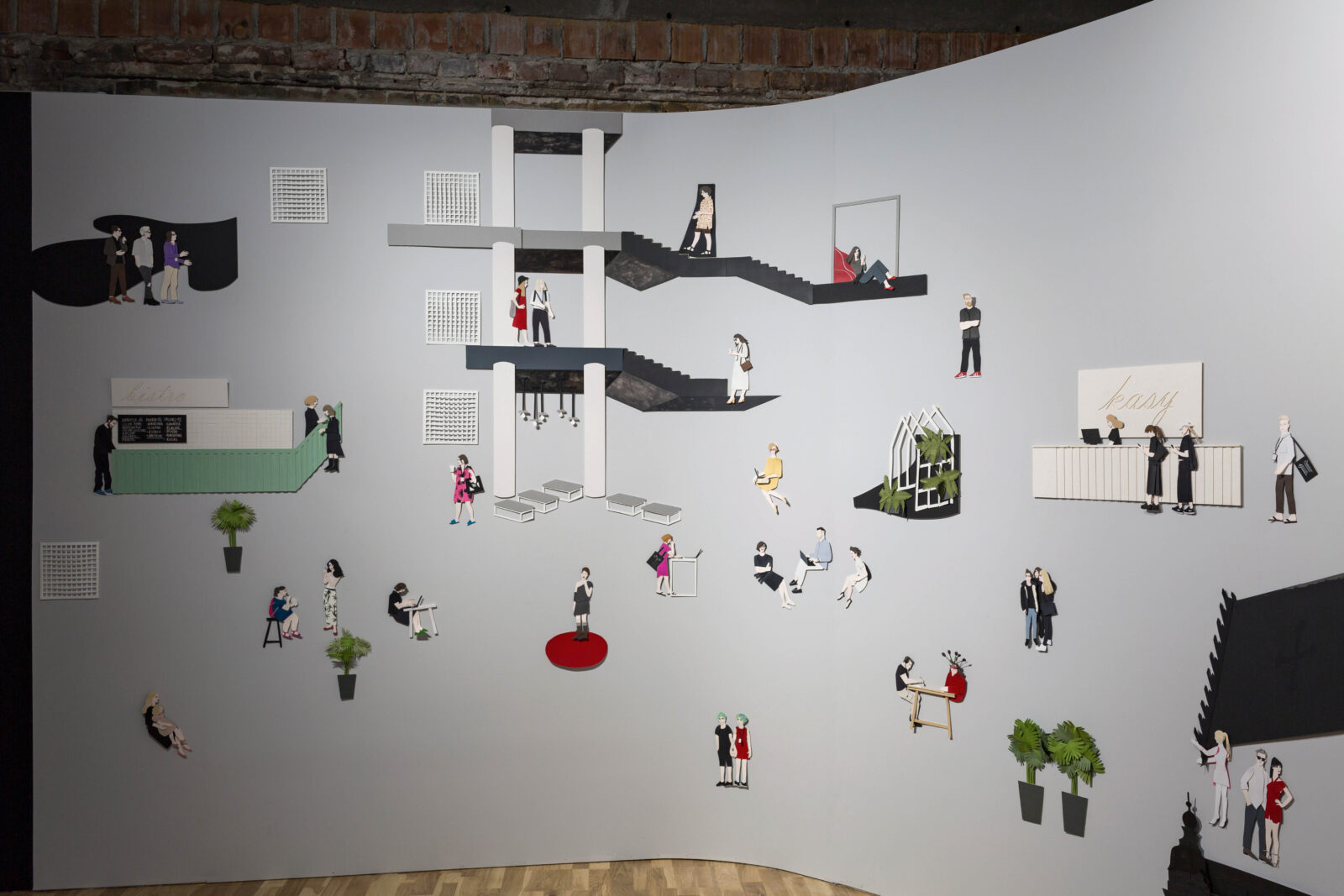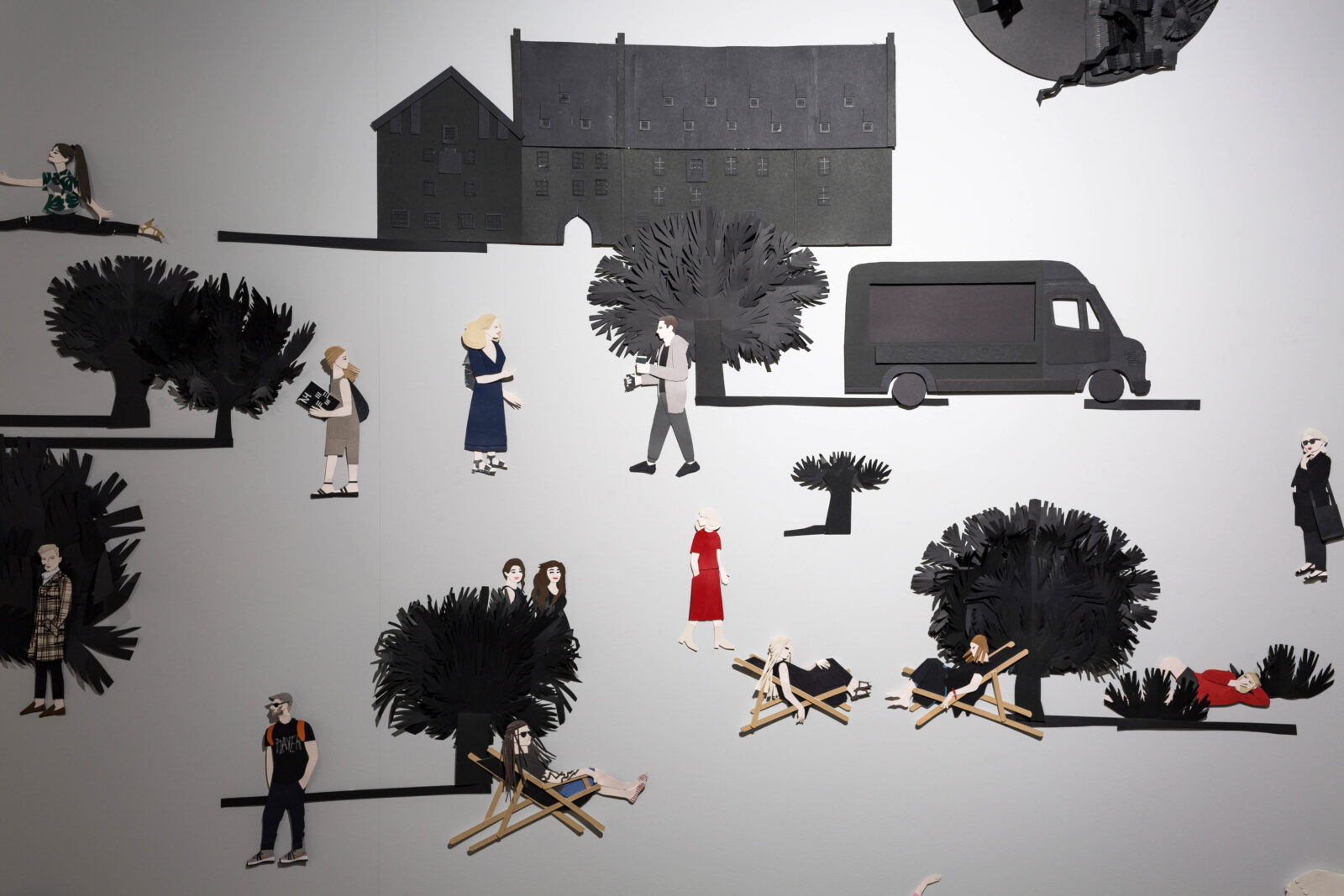A film festival is about watching films; Kasia Kmita watches the festival – and shows it as the exhibition A Horizontal Panorama: Kodras. The presentation consists of just one monumental work. It contains episodes from the past of the New Horizons cinema, festival venues, situations and emotions. Kmita creates a visual representation of the festival by combining various artistic traditions. While referring to the convention of a heroic painting-panorama, she adopts a traditional Polish technique of paper-cutting, which is rooted in folk art, and weaves her narrative by using tools borrowed from the world of comics and film. A Horizontal Panorama: Kodras is an elaborate depiction of the time-space of the New Horizons, in which film stories are intertwined with people’s experiences to present the phenomenon of urban folklore.
It goes without saying: the festival is a spectacle in itself, which contains other spectacles – screenings, personal interaction, events, conversations about life on the screen and life around the cinema. It is a peculiar arrangement of psycho-geographic coordinates, a territory spreading between the screening rooms, foyer, the cinema cafeteria, streets navigated in a hurry to make it on time for the film; between the cinema, the Arsenal festival club, and all those bars and pubs where people eat and drink after the screenings – from Mleczarnia to Karavan, from Odrapany to Surowiec. The festival involves fiction and facts, it has its venues, flavours and smells; it is an elaborate construction that has its culinary, political and, of course, erotic dimension.
This multidimensionality cannot be grasped in a single frame, so Kasia Kmita has chosen a panorama – after all, we are in Wrocław.
Historically, panoramas used to depict battle themes. The Panorama of Racławice, one of Wrocław’s most popular tourist attractions, is no exception here. Drawing on the convention of monumental painting, Kmita maintains the tradition of wide-angle view, spatiality, complexity and semantic richness of the classic panorama, but she departs from its heroic poetics.
One could say that it is a double departure.
Firstly, participation in a film festival is no heroism – it’s pure pleasure. Kasia Kmita, a native Wrocław dweller who has taken part in the festival for years, pays homage to not just the festival, but to the pleasure of participating in it.
Secondly, Kmita uses kodra – a traditional folk art technique. A kodra is a unique type of a multi-layer figurative cut-out that was developed by the inhabitants of the Łowicz region in the late 19th century. This form of art traditionally depicted customs, rituals and celebrations. Kmita employs this technique to present a contemporary fragment of city life, but she remains faithful to the spirit of this tradition. The festival also has its customs and rituals – it is a phenomenon of urban folklore.
It is said that the festival is a special, living institution that is co-created by the audience. Kasia Kmita turns this idea into action. As a devoted fan of the festival and an artist from Wrocław, she literally creates her own festival – a panoramic image of the New Horizons, a phenomenon at the intersection of film fiction, urban space and social reality.
Press:
Girls Room: http://www.girlsroom.pl/zycie/7854-ciecie-kasia-kmita-obserwuje-festiwal-nowe-horyzonty
Magazyn Szum: https://magazynszum.pl/kazde-wydarzenie-ma-swoja-plastyke-panorama-horyzontalna-kodry-kasi-kmity/



